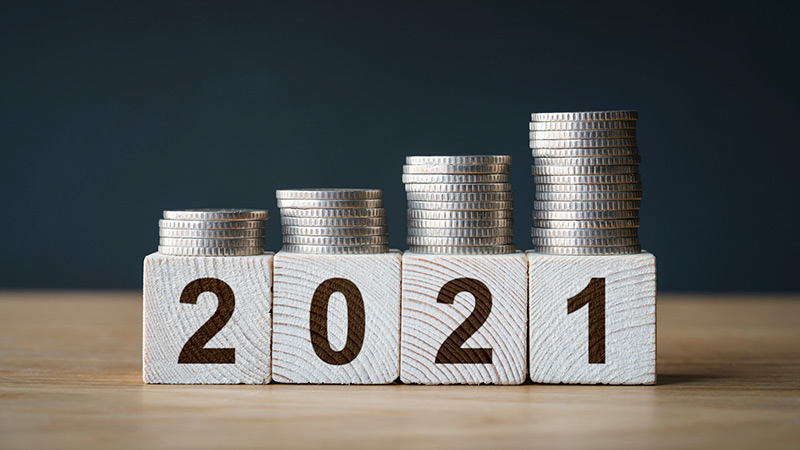
This content is for information and inspiration purposes only. It should not be taken as financial or investment advice. To receive personalised, regulated financial advice please consult us here at Elmfield Financial Planning in Padiham, Burnley, Lancashire.
At the time of writing, the 5th April deadline marking the end of the 2020-21 financial year has now passed. Hopefully, you made the most of your allowances, since doing so can save you £100s (maybe £1,000s) in unnecessary taxes – thus putting money back into your pocket. If you did not, however, then all is not lost. The 2021-22 tax year is here, and with it brings the chance to make the most of a new set of allowances. In this short guide, our team at Elmfield Financial Planning in Padiham, Burnley, Lancashire offers some ideas on how to achieve this in good time – before the next deadline, in April 2022. We hope you find this content useful. If you’d like to speak to an independent financial adviser then you can reach us via:
T: 01282 772938
A summary of your allowances
Most UK residents enjoy access to a range of attractive tax incentives which “refresh” every tax year (i.e. April-April). Once the April deadline passes, however, many of these allowances for the year are lost – along with the opportunity to save on tax. This is why it is important to plan ahead, near the start of a new tax year, to make sure you do not miss out later. Some of the key allowances include:
- ISA allowance. Each tax year, you can commit up to £20,000 into your ISA(s) including cash ISAs, Stocks & Shares ISAs or a Lifetime ISA. Any interest, capital gains and dividends generated within these “investment wrappers” are free from tax. Once the tax year passes, any unused allowance is lost. So, if you put £10,000 into your ISAs in the 2020-21 tax year, £10,000 is unused and is not carried over into the next tax years.
- Annual pension allowance. You are allowed to contribute up to £40,000 into pensions each tax year – or up to 100% of your earnings (whichever is lower). Anything you put into your pension(s) is subject to tax relief, which could amount to a 20%, 40% or 45% free “government top-up – depending on your income tax bracket. Here, there is a bit more flexibility since you can utilise any unused annual allowance from the past three tax years. However, with each passing year you lose one year’s worth of allowance, so it is still important to plan ahead with your financial adviser and make best use of the current year’s allowances.
- Tax allowances. We can include a range of annual allowances here. Your capital gains tax (CGT) allowance lets you generate £12,300 per year in capital gains, tax-free. Each year, you can also earn up to £2,000 in dividends without tax. Another important one to mention is your personal savings allowance, where you can earn up to £1,000 in interest, tax-free (£500 for Higher Rate taxpayers).
Maximising allowances – an example
An example can illustrate the power of making good use of your allowances. Tom is a senior salesperson earning £90,000 per year, putting £40,000 of his income into the Higher Rate of income tax (£8,000). He also recently inherited £100,000 which he put into a general investment account, which has skyrocketed in growth (e.g. 32%) after fortunately catching the bottom of the COVID-19 bear market in 2020. More recently, he has realised he wants to buy a house, so he takes the £132,000 out of his investment account to use as a mortgage deposit. As a Higher Rate taxpayer, however, the £32,000 capital gain he made since 2020 is subject to capital gains tax (CGT). After his £12,300 CGT allowance is taken into account, this leads to a 20% tax on the remaining £19,700 – leading to a £3,940 charge when he withdraws the money.
How could this scenario have gone differently had Tom made better use of his allowances? One option (to mitigate his income tax bill) may have been to increase Tom’s pension contributions – assuming he could afford to do so. Here, the money that would have been taken at 40% tax by the government would have, instead, been put straight into Tom’s pension – i.e. back into his pocket, later on. Another option would have been for Tom to put £16,000 of the £100,000 into a Stocks & Shares ISA, where any capital gains would have been free from tax. Committing the rest of his ISA allowance (£4,000) to a Lifetime ISA, moreover, would also receive a 25% top up from the government (i.e. £1,000) – assuming this money is used towards a house deposit. Finally, the timing and nature of Tom’s withdrawal from his investment account could also have a big impact on how much CGT he pays. For instance, taking everything out in two withdrawals – once in each tax year – would allow him to make use of two £12,300 CGT allowances.
Invitation
If you are interested in starting a conversation about your own financial plan or investments, then we’d love to hear from you. Please contact us to arrange a free, no-commitment consultation with a member of our team here at Elmfield Financial Planning in Padiham, Burnley, Lancashire.
Reach us via:
T: 01282 772938

